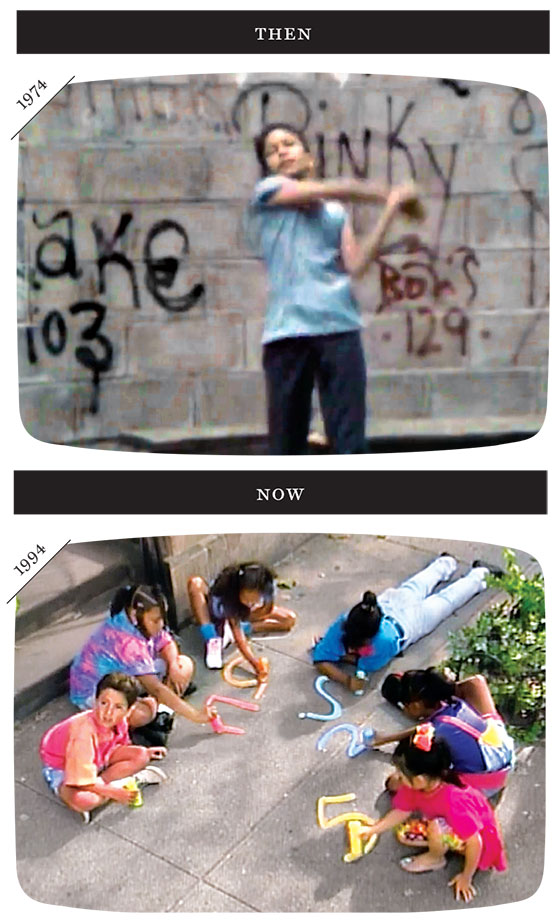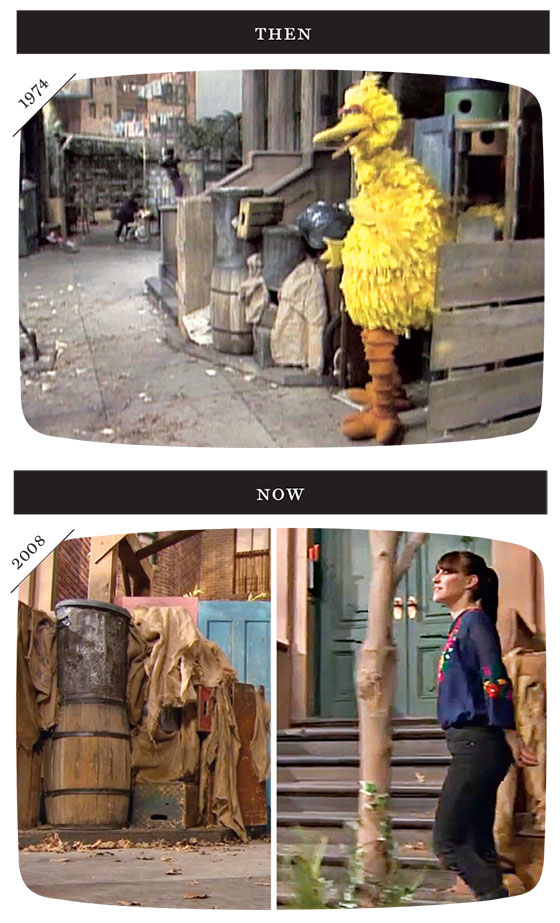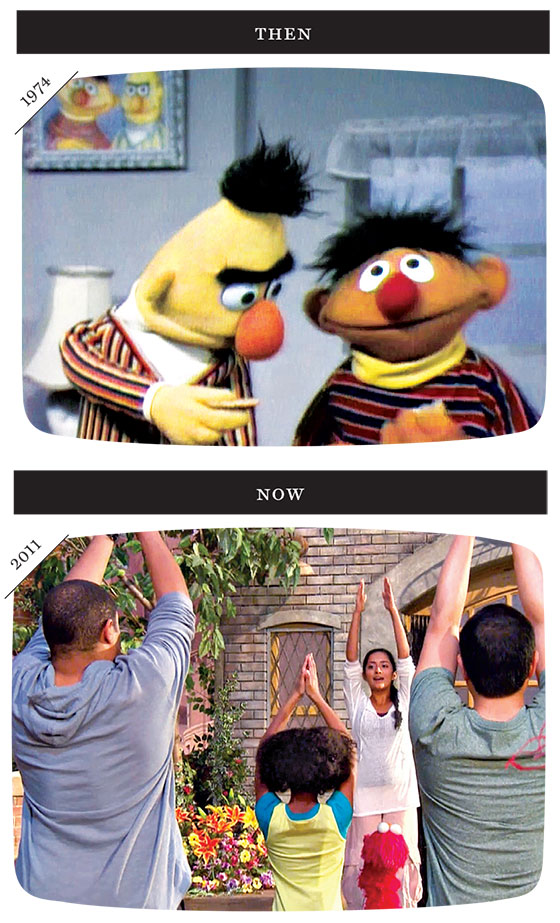Streaming video has resurrected a number of old television standbys, none so universally beloved as Sesame Street, now available on both iTunes and Netflix. Besides providing ample opportunity to search for gay subtext in Bert and Ernie’s 40-plus-year cohabitation and admire Bill Cosby’s seventies ’fro, the show’s evolution is also an anthropological study in urban children and their changing environment.
Change:
The Intro
The opening credits used to show candid scenes from drab city streets. Now the show opens with a child’s colorful, spick-and-span chalk drawing of a cityscape.

1974: Kids play stickball in graffiti-sprayed concrete parks and run through an overgrown field of weedy, brown grass.
1994: Kids play in a clean, tricked-out playground with a little pool, and cartwheel in fields of fresh, well-maintained grass.
Change:
The Set
When Sesame Street began, its creators deliberately made the sets look like the inner city to appeal to poorer children. By the Giuliani administration, that had changed.

1974: Bits of trash are on the ground. Laundry dries on fire escapes. The stoop is fit for a garbage monster in the seventies.
2008: By 2008, Feist sings about numbers in front of a much cleaner façade. Oscar’s trash can is conspicuously tidier.
Change:
The Content
The show’s content has always been educational, but the messages, subtle and not so subtle, have also changed with the times.

1974: Long before the child-obesity crisis, Bert and Ernie learn to share their cookies with zero discussion of trans fats.
2011: Leela, an Indian character, teaches Elmo about the benefits of proper yogic breathing and stretching.
Watch the Video: Sesame Street, Then and Now
Have good intel? Send tips to intel@nymag.com.